written by Amy Doan | photos by Cameron Zegers
The Oregon Coast is rich in mushrooms, shellfish and other wild foods. Known as “The People’s Coast” for its public beaches, the area is a bountiful outdoor pantry that’s open to anyone. To avoid a bellyache—or worse—do your homework and consider a class or guided tour before harvesting from the wild. The best options are hands-on courses offering techniques, safety tips and recipes. Here are some of our favorite introductions to the world of wild edibles. Crab and chanterelle chowder, anyone?
Mushrooming
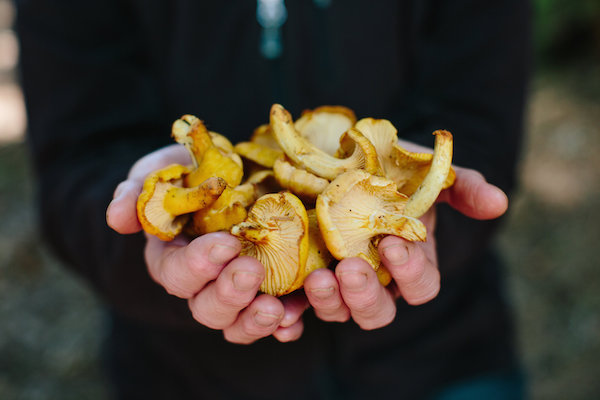
Fog drip makes the coast a dream climate for fungi.
You don’t need a doctorate in mycology to forage. Take a free, one-and-a-half-hour mushroom hike at Fort Stevens (oregonstateparks.org). Tasty king bolete and lobster mushrooms thrive on the trunks of coastal Sitka spruce trees in the park, and rangers help you distinguish between edible and poisonous ‘shrooms.
If you forage on your own, “start small,” said Anna Russo of the Oregon Mycological Society (wildmushrooms. org). “Study a handful of favorite edibles and learn what to avoid.”
You can identify mushrooms by their “gills,” the folds under the cap of some species, the shape of the cap, the scent and the color of the flesh when scratched. When in doubt, bring your bounty to an expert for examination.
Mycological Society chapters lead regular forays along the coast. Russo and fellow member Kathleen Southwick took me on a hunt around Spring Lake Open Space in Lincoln City. In two hours, we found chanterelles, oysters and king boletes—all good edibles. We also found inedible “false” chanterelles and what club members disparagingly call “LBMs”—(undesirable) little brown mushrooms. Mushroomers have their own lingo, and even learning a few terms made me feel like a pro. Tip: A “leaf-shroom” is a pale leaf resembling a mushroom from far away.
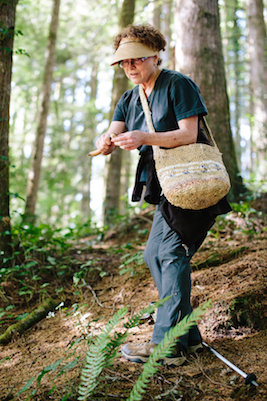
Gear Reliable field guide, such as: Mushrooms Demystified by David Arora | Sturdy shoes | Cloth or paper bag | A knife with a boar bristle brush is handy (about $60)
When to go All year, but prime season is fall.
Safety When in doubt, don’t taste. Cook all wild mushrooms. Be aware of wildlife. Carry a whistle and a GPS. With your eyes sweeping the ground instead of landmarks, it’s easy to get turned around.
Limits One-gallon bucket per day.
Crabbing
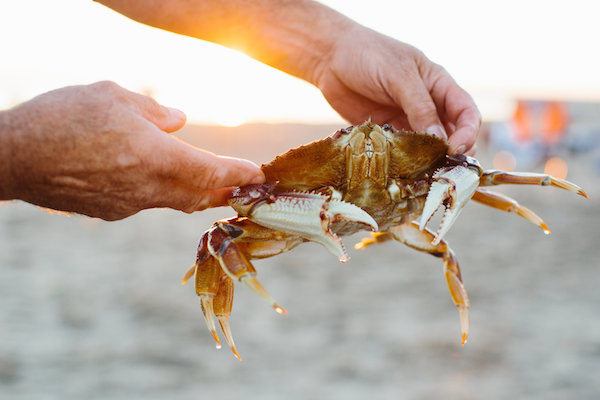
Dungeness crabs prevail in Oregon, and are preferable to smaller red rock crabs. Catch them during “slack” tide, a window of a few hours during and after low tide. The Department of Fish & Wildlife has howto’s, tide charts and videos (dfw.state.or.us).
You can drop a large trap from a pier or boat, or cast lighter folding traps from the beach. Bill Lackner, who leads crabbing classes with Catch Your Dinner (oregoncoast.org/catch-your-dinner), is a fan of the folding trap method for beginners. “You learn how to bait, and how to handle and measure the crabs without worrying about falling out of your boat,” he said.
Lackner, 75, whipped a crab trap in circles over his head with the ease of a cowboy, sending it soaring 100 feet over the water. Twenty minutes later, he pulled in two crabs nibbling on chicken-leg bait. Females must be tossed back. But the other was a keeper—a male, more than six inches across.
Lackner makes it look easy. When I tried to mimic him I didn’t whack anybody in the head, but I released my line too early and my trap shot out on a low trajectory, hitting the water just ten feet from shore. In golf, the shot is called a “worm-burner.”
I eventually found my groove and managed some respectable throws. Twenty minutes later, I had my first catch. I was hooked.
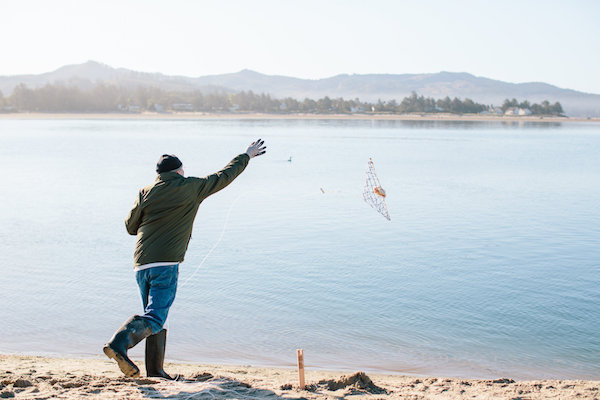
Gear Shellfish license, available at sporting goods stores; $7 for in-state residents | Traps (folding type, about $22; bigger pots, $30 to $100) | Raw chicken for bait | Bucket | Cooler Gloves | Boots | Caliper ($2)
When to go Slack tide, year-round.
Safety Never turn your back on the ocean. Hold crabs by the abdomen, clear of pincers. Check biotoxin alerts on the Oregon shellfish hotline: 800.448.2474.
Limits 12 Dungeness crabs per day. Keep only male crabs, minimum 5.-inches across the back.
Clamming
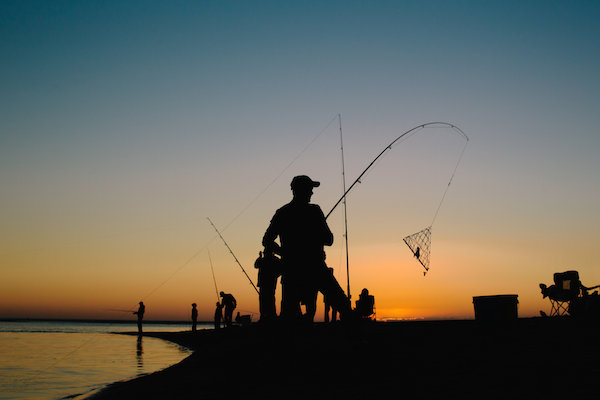
Our coast is teeming with bay clams, including gaper, butter and littleneck, in addition to the wellknown razor clams. Take a Catch Your Dinner class or teach yourself how to dig. The Fish and Wildlife website has tutorials and maps, and instructions on how to buy a shellfish license.
“Clamming doesn’t require specialized equipment—just a shovel, gloves, boots and a bucket,” said Mitch Vance, shellfish project manager with the Oregon Department of Fish and Wildlife in Newport. “Have fun, but use common sense.”
The Tillamook, Netarts, Yaquina and Coos Bay estuaries have good bay clamming. There you’ll find trophy-sized gapers, suitable for clam steaks or chowder. Razors thrive along an eighteen-mile stretch from the Clatsop spit to Seaside. They’re sweet and tender, perfect for pan-frying.
Look for the telltale “shows,” or airholes in the sand. Gapers have oblong shows the width of a silver dollar; Razor clam shows are dime-sized dimples. They’re named razors for a reason; always wear gloves when clamming.
Push your shovel straight down into the sand a few inches from the show. Don’t dig right on top of it or you’ll cut the clam’s neck. Move the shovel toward the clam so it can’t burrow deeper and carefully scoop it out with your hand.
Gear Shellfish license ($7-$20) | Shovel | Boots | Gloves | Bucket
When to go Low tide. Bay clamming is yearround; Razor clamming closes periodically.
Safety Never turn your back on the ocean. Check for biotoxin warnings. Wear gloves.
Limits Limit on bay clams is 20 total with no more than 12 gapers. Limit on razor clams is 15. Check more limits and closures at dfw.state.or.us.
Sea Vegetables and Greens
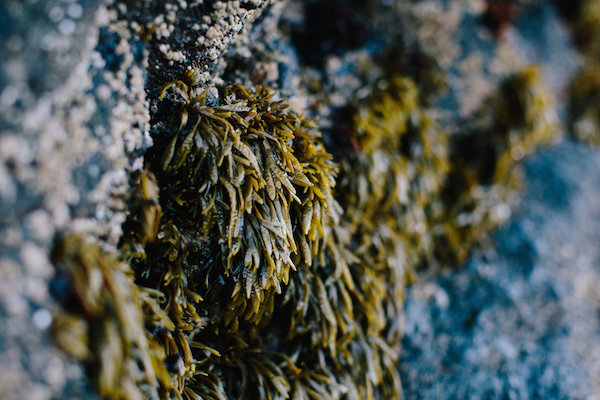
The green goo you see at the beach is nutrient-dense and expensive in stores. Commercial harvesting is not allowed, but personal harvesting has become increasingly popular over the past ten years. Even plants that wash up on the beach can stay edible for hours, depending on the weather and the species, but you have to know what you’re doing.
John Kallas of Wild Food Adventures (wildfoodadventures.com) leads classes in gathering, preparing and storing coastal foods. Kallas offers a Sea Vegetables of the Pacific Coast class in Garibaldi. Participants learn to identify and collect nori, kombu, sea lettuce, fucus and other greens. “It’s not a free-forall, but most modern people do not know the wild bounty that is available to them,” he said.
Gear Reliable field guide (Kallas recommends some on his Wild Food Adventures site) | Knife or scissors | Plastic bag
When to go March 15 through June 30 Safety Be aware of tides, waves and other hazards.
Limits Three gallons per year, per person; one gallon per day. Check restrictions on marine gardens and reserves at oregonstateparks.org.



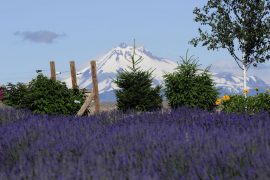


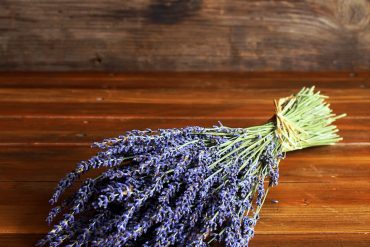



Your paragraph about dungeness crab gave a legal measurement of 5 inches. 5.75 inches minimum across the back is correct. That 0.75 inch difference may cost your readers a lot of money in fines.